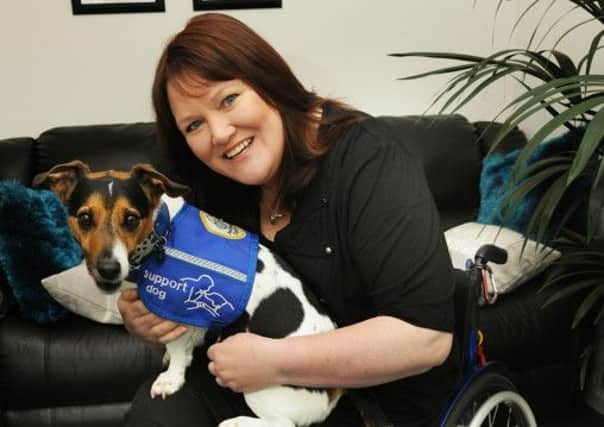£127,000 The cost of animal rescue call-outs to the taxpayer


Those were just some of the 46 animals rescued by firefighters in Blackpool, Fylde and Wyre over the last two years at an estimated cost of £27,600.
Firefighters in Lancashire were called out more than 200 times to rescue animals in 2012/13 and 2013/14 – costing around £127,000 based upon the typical £600 cost per call-out.
Advertisement
Hide AdAdvertisement
Hide AdThe figures do not include incidents which also affected people, such as animals being rescued from house fires.
National campaign group The Taxpayers Alliance has called on Lancashire Fire and Rescue Service to cut the amount of money it spends on rescuing animals.
Its chief executive, Jonathan Isaby, said: “It’s crucial we drive down on these costs and ensure that the emergency services react proportionately to these kind of call-outs.”
But Carol Willacy, from Pike Court, Fleetwood, who relies on her support dog Billy, due to her osteoarthritis and severe mobility problems, hit out at the suggestion.
Advertisement
Hide AdAdvertisement
Hide AdShe said Billy had twice potentially saved her life, once by pawing at a neighbour’s door when she collapsed while gardening, and another time by licking her face to revive her two hours after she had fainted while getting out of her car on a cold night.
“If anything ever happened to Billy I would want an emergency response to help him just as he helped me,” said Carol, 45.
“A lot of people rely on animals, especially if they live alone like me, and they can mean everything to you emotionally. To lose an animal can be just as traumatic as losing a member of your family.
“It’s horrible to think people would not want firefighters to attend these incidents for the sake of £30,000, which is how much it costs to train a support dog like Billy.
Advertisement
Hide AdAdvertisement
Hide Ad“It would also risk human life because people would take it into their own hands to rescue their pets.”
John Taylor, a spokesman for Lancashire Fire Service, said: “There will always be those who point the finger and say, ‘These are precious resources, what’s the point in sending firefighters to rescue hamsters’?
“It’s partly a humanitarian thing, but our service is about saving life and property, and animals fall into both those categories.
“Some of the larger farm animals have had a lot of investment and are worth a considerable amount of money. It’s about prioritising time. If the crews are out rescuing a cat and there is a house fire they will obviously divert to that.”
“Animal rescues do not require additional resources.”
Advertisement
Hide AdAdvertisement
Hide AdSome firefighters - especially those based in rural areas - undergo specialist training in large animal rescues at Myerscough College, in which they learn how to carry out tasks like fitting a harness to a horse.
Fire service call-outs
Other local call-outs included:
A cat trapped inside a car bumper in St Annes
A dog stuck in railings in Poulton
A rabbit trapped under floorboards in Blackpool
A seagull stuck on a TV aerial in Blackpool
A chicken trapped behind a greenhouse in Thornton
A cat trapped in a cavity wall in St Annes
A dog stuck in a car when the owner accidentally locked their keys inside it in Lytham
A bird trapped at the back of a gas fire in St Annes
A horse stuck in a fence in Poulton
A Harris’ hawk stuck in a tree in Blackpool
A sheep tangled in brambles in Poulton
A swan trapped in a fishing line in Blackpool